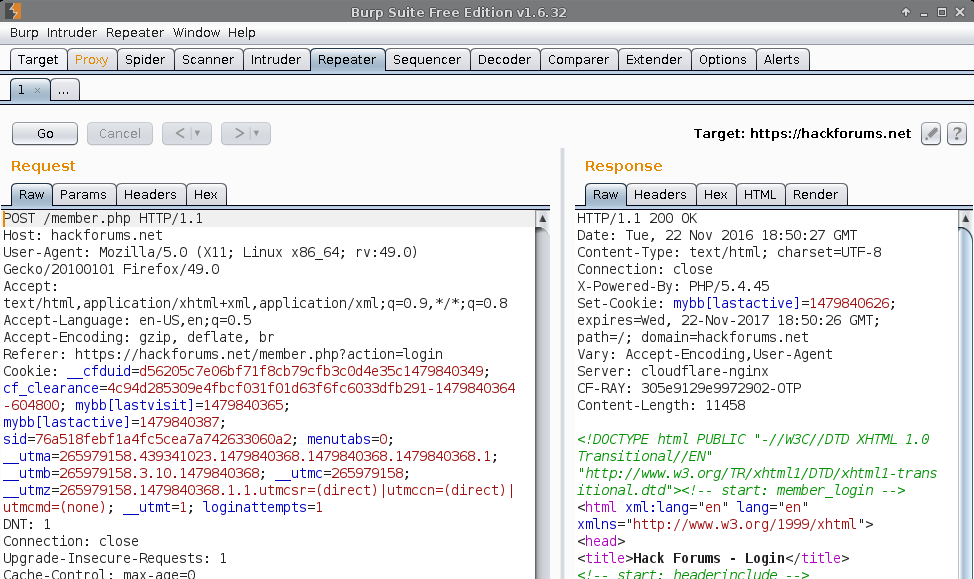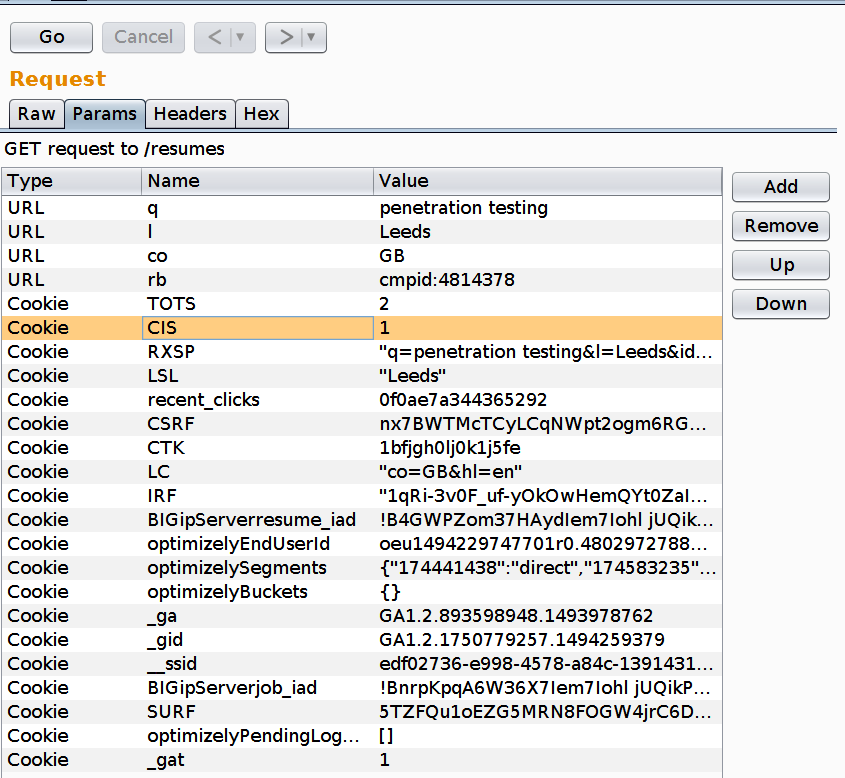

- BURP SUITE REPEATER HISTORY INSTALL
- BURP SUITE REPEATER HISTORY MANUAL
- BURP SUITE REPEATER HISTORY CODE
- BURP SUITE REPEATER HISTORY PROFESSIONAL
2 Double-click the der file and click Install Certificate 3 Select Current User 4 Select Place all certificates in the following store 5 Select Trusted Root Certification Authorities Reproducing Common Pentest Vulnerabilities On Windows you can follow the following steps to trust the certificate:ġ Click CA Certificate and download the r certificate. When Burp is running, a web interface is available at from the configured browser. If you see certificate errors with the pre-configured browser, you should install Burp’s CA certificate at the system level. By default, “Intercept” is toggled on, and you will probably want toggle that off:īurp needs to proxy TLS connections and must be able to inspect SSL. Once you open the browser, you can navigate and authenticate to your application. Navigate to Proxy – Intercept – Open Browser to open the browser. Fortunately, Burp includes a pre-configured Chrome binary: A browser must be configured to use the local proxy ( 127.0.0.1:8080) and trust Burps root Certificate Authority certificate. This can be downloaded here: īurp is “MITM proxy” and thus can inspect all HTTP and Websocket traffic. Clearly view raw requests/response pairs.īurp has a free community edition that contains all the key features above.

For developers, there are a few key features that greatly improve on standard browser debuggers:
BURP SUITE REPEATER HISTORY PROFESSIONAL
The Tools Of The TradeīurpSuite (or “Burp”) is the industry standard framework for performing professional application penetration tests. But aligning developer skills with the tooling used during the pentest can help confirm issues faster, and deploy fixes faster. Right-click a request and select Show new history window to open a new history window with its own display filter.Īccess the Inspector, to easily view and edit interesting items.Reproducing the vulnerabilities documented in a pentest report is a common engineering pain point. In addition to the main history view, you can also:ĭouble-click an item to open it in a pop-up window. The message may have been modified through: Any modified messages are shown separately. If you select an item from the HTTP history, the lower pane shows the request and response messages for the item. You can add annotations to HTTP history items.

For example, you can send a request to another Burp tool. Right-click any item in the HTTP history to perform actions that can drive your testing workflow. To reorder the HTTP history, click and drag a column header. You can cycle through ascending, descending, and unsorted. To sort the HTTP history, click on any column header. You can customize the HTTP history layout: This enables you to browse without interruption while you monitor key details about application traffic. The HTTP history is always updated, even if Intercept is off.

Length - The length of the response in bytes.
BURP SUITE REPEATER HISTORY CODE
Status - The HTTP status code of the response.Edited - Flag whether the request or response were modified by the user.Params - Flag whether the request contains any parameters.URL - The URL file path and query string.Host - The protocol and server hostname.The HTTP history contains the following information: You can also see any modifications that you made to intercepted messages. You can use the HTTP history to see a record of the HTTP traffic that has passed through Burp Proxy. Managing application logins using the configuration library.Spoofing your IP address using Burp Proxy match and replace.Testing for reflected XSS using Burp Repeater.Viewing requests sent by Burp extensions using Logger.Resending individual requests with Burp Repeater.
BURP SUITE REPEATER HISTORY MANUAL


 0 kommentar(er)
0 kommentar(er)
